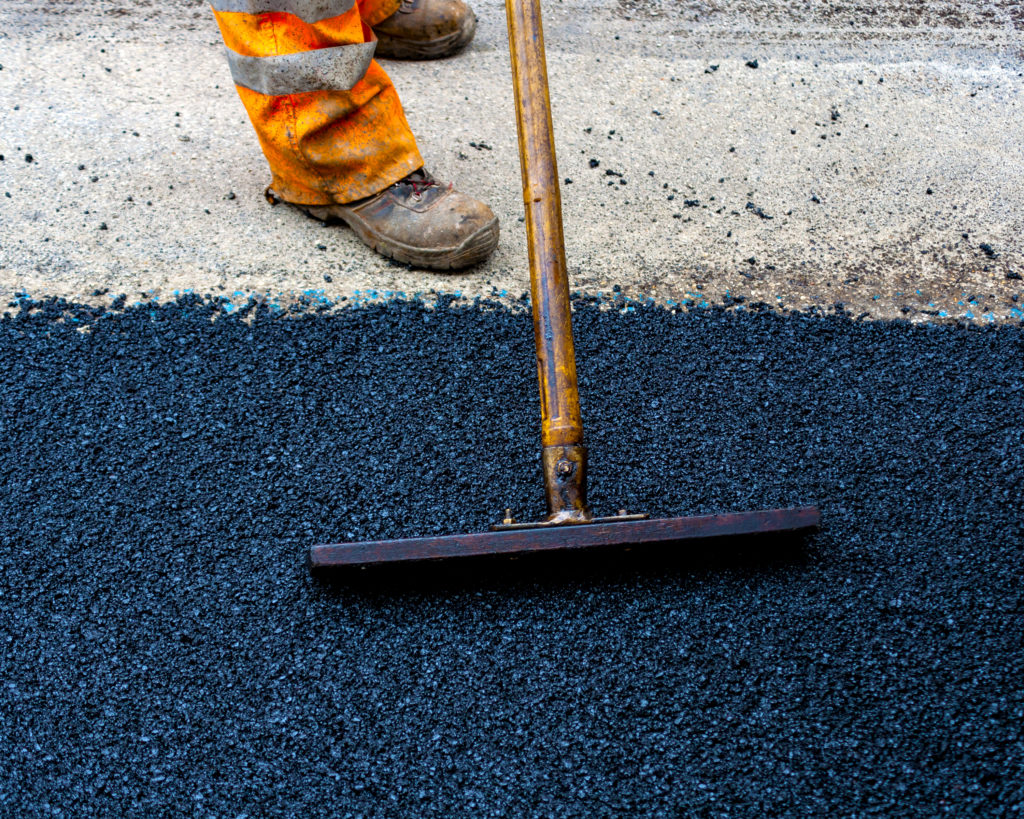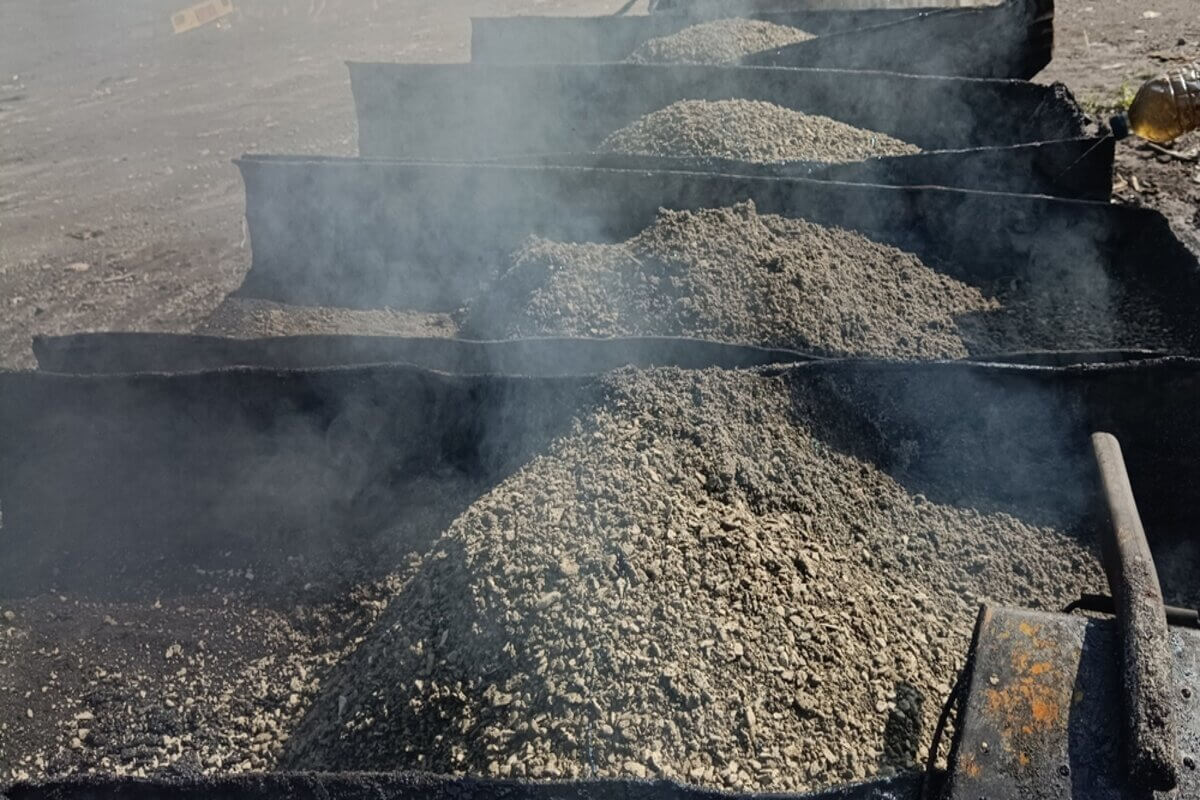Hot Mix Asphalt Paving: Elevating Commercial Parking Lot Requirements
Hot Mix Asphalt Paving: Elevating Commercial Parking Lot Requirements
Blog Article
Unlocking the Secrets of Hot Mix Asphalt Innovation
Exploring the midsts of warm mix asphalt innovation uncovers a globe where thorough procedures and accurate formulations merge to shape our roadways and facilities. The fusion of fillers, binders, and aggregates isn't just a building job however a tactical orchestration of longevity and effectiveness.
Importance of Hot Mix Asphalt
Warm Mix Asphalt plays a crucial function in modern facilities development because of its resilience and cost-effectiveness. As one of the most commonly used paving material for roadways, freeways, and parking area, Warm Mix Asphalt supplies a series of advantages that add to its relevance in construction jobs. One key advantage is its capacity to withstand heavy traffic loads and severe weather, supplying a trusted and lasting surface area for transportation networks. Furthermore, Warm Mix Asphalt is affordable in both preliminary building and construction and long-term maintenance, making it a favored choice for lots of infrastructure jobs.
The durability of Warm Mix Asphalt stems from its structure, which includes accumulations, binder, and filler products that are thoroughly selected and mixed to meet details performance needs. On the whole, the value of Warm Mix Asphalt in infrastructure growth can not be downplayed, as it proceeds to be a foundation of modern building practices.
Parts of Asphalt Mixes
The composition of asphalt blends includes meticulously chosen accumulations, binder, and filler materials that are critical for accomplishing specific efficiency requirements. Accumulations are the primary element of asphalt blends, offering toughness and stability. These accumulations can be all-natural, such as gravel or smashed stone, or synthetic, like recycled products from old pavements. The binder, normally bitumen or asphalt cement, holds the accumulations with each other and offers adaptability and durability to the mix. The selection of the binder is critical as it straight influences the mix's performance in different climate condition. Fillers, such as moisturized lime or Rose city cement, are utilized to boost the mix's workability and aging resistance. Angled Parking.
The combination and proportion of these components play a significant duty in identifying the high quality and performance of the asphalt mix. Engineers thoroughly create the mix to satisfy certain needs, taking into consideration variables like website traffic quantity, environment problems, and sidewalk life expectancy. Appropriate choice and balancing of aggregates, binder, and fillers are important for creating long lasting, durable asphalt sidewalks.
Combining and Production Techniques

As soon as the accumulations are picked, the binder, often asphalt concrete, is added to bind the materials together. The binder's quality and quantity considerably impact the mix's stamina, versatility, and resistance to environmental factors. In addition, fillers like moisturized lime or Portland cement may be integrated to enhance particular qualities of the asphalt mix, such as its workability or moisture resistance.
During manufacturing, the accumulations and binder are heated up, usually in between 250-325 ° F(121-163 ° C ), to facilitate blending he has a good point and make sure appropriate finishing of the aggregates. The blending procedure should be extensive to achieve an uniform blend that promotes the preferred efficiency attributes of the asphalt. Numerous strategies, such as set mixing or drum blending, are used to accomplish constant and top quality asphalt blends for construction tasks.
Aspects Affecting Asphalt Efficiency
Variables influencing asphalt efficiency encompass a variety of variables that influence the resilience, long life, and overall high quality of asphalt sidewalks. One vital element is the high quality of products made use of in the asphalt mix.

Design considerations, such as pavement density and water drainage, are essential in guaranteeing the long-lasting efficiency of the asphalt pavement. By thoroughly thinking about these engineers, elements and specialists can enhance asphalt efficiency and boost the solution life of sidewalks.
Lasting Practices in Asphalt Innovation

WMA permits for the production and positioning of asphalt mixes at reduced temperature levels compared to typical hot-mix asphalt, resulting in decreased power consumption and greenhouse gas exhausts. The use of porous asphalt mixes can aid reduce stormwater drainage issues by permitting water to infiltrate with the sidewalk and into the ground, promoting all-natural water filtration and charge processes.
Verdict
To conclude, warm mix asphalt technology plays an important duty in modern-day infrastructure development due to its browse around here toughness and cost-effectiveness. By meticulously balancing parts, employing correct blending strategies, and considering various factors, engineers can create top quality asphalt mixes that endure rush hour tons and severe weather conditions. Embracing sustainable techniques, such as making use of recycled products and warm-mix modern technologies, additionally improves the environmental friendliness of asphalt technology.
Blending and production techniques in hot mix asphalt modern technology entail the exact combination and processing of accumulations, binder, and fillers to produce a high-performance and resilient asphalt mix.Factors affecting asphalt efficiency encompass an array of variables that influence the sturdiness, longevity, and general high quality of asphalt pavements. Sustainable techniques in asphalt innovation encompass numerous efforts aimed at lowering the environmental impact of asphalt manufacturing and paving processes. By integrating redeemed asphalt pavement (RAP) and recycled asphalt tiles (RAS) into new asphalt blends, the industry can dramatically minimize the consumption of raw products and energy, while likewise decreasing navigate to this website land fill waste.
WMA allows for the manufacturing and positioning of asphalt mixes at reduced temperatures contrasted to conventional hot-mix asphalt, resulting in lowered energy intake and greenhouse gas emissions.
Report this page